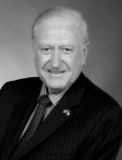On 10 March, Patient Safety Movement Foundation (PSMF), a global non-profit organisation dedicated to achieve zero preventable deaths, announced the appointment of its new chairman of the board of directors – Dr Michael A.E. Ramsay, MD, FRCA. A renowned medical professional, Dr Ramsay shares his vision of the organisation’s future strategy and his advice to healthcare leaders striving for patient safety.
Being a long-standing PSMF board member, how do you personally feel about the current appointment?
I am excited and look forward to following in Joe Kiani’s [founder and prior chairman of the board of PSMF] footsteps and continuing to move the needle to zero preventable deaths in our hospitals. The hospitals must become safe havens for our patients and not danger zones.
What is your agenda in the new
capacity?
Continue to bring together everyone who is involved in healthcare including patients, politicians, care givers, the many organisations and industry to hardwire the best practices (APSS) in every hospital and prove it. Make the March for Patient Safety in September a resounding success.
The goal of zero preventable deaths
by 2020 was not achieved. What were the main obstacles on this path and how can
they be overcome to achieve the new 2030 goal?
This is a new approach to making our hospital safe. Zero by 2020 was a challenge, but it was needed to spark urgency and momentum. One death is too many. We need to continue this drive to 2030 when the goal will be possible if we can hardwire every hospital and insist on and obtain transparency of data and aligned incentives.
What has healthcare in general and PSMF
in particular learned from the current COVID-19 crisis so far?
We need to have a planned response in place for the next viral pandemic so that we can quickly react, rapidly inform and contain it.
In your Letter from the Chairman, you say that
“Hospitals must become High Reliability Organizations.” What should be the
first steps to achieve this?
Leadership must create a culture of safety, which comes from the top down.
In your opinion, how sedation
practices can be improved for increased patient safety?
We need precision medicine applied to sedation. We have the technology to titrate sedation level accurately and prevent harm from over and undersedation.
What would you single out as a career
highlight?
Three major events: my wife Zoe and wonderful supportive family; becoming President of the International Liver Transplantation Society reflecting the clinical team at Baylor Scott and White Health; being appointed Chairman of PSMF Board of Directors, giving me the third opportunity to work with a phenomenal team.
What is the most memorable experience
from your own practice related to patient safety?
The development of a culture of safety at Baylor Scott and White Health. It’s palpable, you can feel it when you enter the facility. “First Do No Harm.”
What is your advice to healthcare
leaders striving for increased patient safety around the world?
Lead by example. Make sure the tools are in place, the data are collected and the proven measures (APSS) are being followed. Make sure that there is transparency and aligned incentives.
Dr Michael A.E. Ramsay
Dr Ramsay is the current president of the Baylor Scott & White Research Institute in Dallas (TX), USA, where he spearheads clinically relevant research efforts. Since joining the organisation, he has developed a successful infrastructure that has increased the number of clinical trials from 250 to more than 2,000.
He is well-known for the development and
implementation of the Ramsay Sedation Scale designed for interpreting the depth of
sedation for patients in the critical care unit. He also serves as chairman of
the Department of Anesthesiology and Pain Management at Baylor University
Medical Center. Dr Ramsay is Director of Anesthesia for the liver transplant
programme and has personally provided anaesthesia for over 1,000 liver transplant
recipients. He is Past President of the International Liver Transplantation
Society and is a member of the American Society of Anesthesiologists Committee
on Transplant Anesthesia.
Dr Ramsay is a Professor at Texas A & M
Health Science Center and holds a clinical professorship in anaesthesiology at
the University of Texas Southwestern Medical School as well as in the
Department of Periodontics at Baylor College of Dentistry, Texas A & M
University.
He is currently involved in a number of
clinical research projects for which he is the principal investigator. His
current research includes the role of nitric oxide in ameliorating the
reperfusion injury in liver transplantation. He also is a Principal
Investigator of several NIH-funded clinical trials to improve the outcomes of
trauma victims.
Dr Ramsay has published over 200
peer-reviewed articles and numerous chapters in text books. He was a
member of the Sedation Analgesia Guidelines Task Force of the Society of
Critical Care Medicine.
In PSMF, Dr Ramsay is one of the longest-standing board members, serving since 2013. He has been an advocate for patient safety in the anaesthesia world since the 1980s and embodies the values and principles set forth by the foundation.
To learn more about Patient Safety Movement
Foundation, visit patientsafetymovement.org























